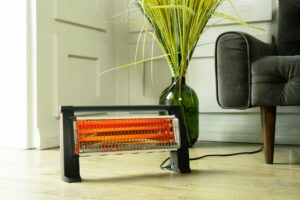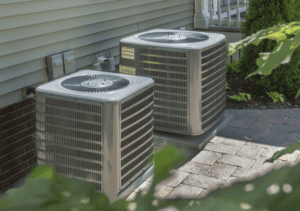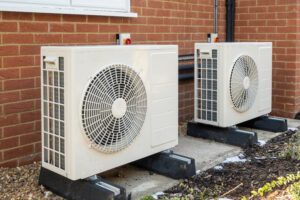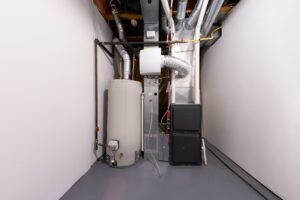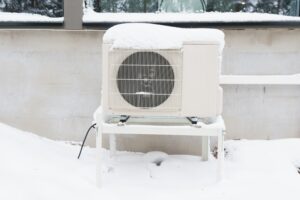There is a lot of information online about indoor air quality. At Cates Heating and Cooling, we want to dispel myths and set the facts straight for our customers. Here are a few facts about indoor air quality that every homeowner should know.
- Indoor Air Pollution is one of the Top 5 Environmental Dangers According to the EPA
The Environmental Protection Agency has consistently ranked indoor air pollution as one of the most concerning environmental dangers present in the daily lives of Americans over the last few years. After extensive studies, the EPA has determined that indoor air pollution is a problem for all types of homes regardless of where the home is located.
Some of the most common sources of indoor air pollution include building materials, chemical products, combustion sources, outdoor air pollutants, and organic matter. In homes of smokers, secondhand smoke is another indoor air pollutant, whether anyone smokes inside the home or not.
- Pediatric Asthma Rates Have Increased Dramatically
Numerous indoor air pollutants have been directly tied to increasing the risk of asthma in children. In fact, studies have shown that pediatric asthma rates have increased by nearly 73 percent. Asthma is now considered one of the most common chronic conditions in the country, and it is also the leading serious chronic illness of children in the United States. Asthma accounts for 14.2 million doctor visits every year and an additional 1.8 million emergency room visits.
Purifying the air in your home can help you reduce your children’s risk of developing asthma. Spending more time outdoors may also reduce the risk of asthma in children.
- Household cleaning products and pesticides can cause health problems when they dissipate into the air of your home
The chemicals that you use to clean and otherwise care for your home contain chemicals that can greatly reduce the quality of the air in your home. Even personal care products, paint, and solvents are known as indoor air pollutants. These chemicals have been known to cause allergic reactions, dizziness, skin irritation, nausea, and cancer.
- On average, the quality of indoor air is between two and five times as polluted as the air outside
The EPA has estimated that the quality of indoor air is between two and five times more polluted than outdoor air. Indoor air pollutants such as carbon dioxide, pet dander, mold, mildew, and dust are all problematic. In just one year, a six-room home can collect approximately 40 pounds of dust that can contain all kinds of toxic chemicals. Almost 30 percent of the homes in the United States have problems with unhealthy levels of mold, mildew, and/or rot. While these numbers may seem staggering,
Additionally, some homes may be more than 100 times more polluted than outside air. Part of the problem is that many people don’t realize just how polluted the air inside their homes can be or the factors that lead to indoor air pollution.
- Americans spend about 90 percent of their time indoors, meaning that we breath indoor air much more frequently than outdoor air
The amount of time that the average American spends indoors is much higher than the amount of time spent outside. In fact, most estimates show that we tend to spend 90 percent of our time indoors. Our constant exposure to potentially polluted indoor air increases our risk of breathing in dirty air.
- Secondhand smoke is considered one of the top indoor air pollutants
Everyone knows that smoking is hazardous, but did you know that secondhand smoke is one of the top indoor air pollutants? The reason that secondhand smoke is so dangerous is that it contains more than 200 different types of poisons, including carbon dioxide and formaldehyde. At least 60 chemicals found in secondhand smoke are known to cause cancer.
A few surprising stats about secondhand smoke for non-smokers include:
- 3,500 lung cancer deaths each year are non-smokers
- 42,000 heart disease deaths each year are non-smokers
- Over one million children have asthma-related problems
Secondhand smoke is also very dangerous for infants and can even increase their risk for ear infections, pneumonia, lower respiratory tract infections, and asthma.
- Air Purifiers Can Manage Indoor Air Pollution
While it is impossible to avoid causing indoor air pollution, there are measures that you can take to reduce that amount of pollution inside of your home. One of the best ways to protect your family from indoor air pollution is to invest in an air purifier that can remove some of these harmful pollutants from the air. You probably won’t be able to remove all pollutants from the air, but you can help reduce the amount that is in the air of your home.
- Kitchens Tend to Be Problematic Areas for Air Pollution
The appliances that you use to cook food for your family can produce pollutants like nitrogen dioxide, carbon monoxide, acrolein, and formaldehyde that are toxic. While the Clean Air Act regulates what is deemed acceptable for levels of these pollutants outside, there is no safety standard for the air inside homes. These pollutants are the reason that proper ventilation is so important in your kitchen.
- Radon Has a Huge Impact on Indoor Air Quality
A colorless, odorless gas called radon has a huge impact on the quality of the air inside of a home. Radon forms when uranium breaks down to radium, which then breaks down into radon. Uranium can be found in the soil or rocks under the foundation, where it enters through floors, drains, walls, and even well water. When radon decays, it releases radioactive byproducts that can have long-term health implications for people. Radon is considered to be the second leading cause of lung cancer, which causes around 21,000 deaths each year in the United States. You can either test your home for the presence of radon yourself or hire a contractor to do it for you.
- Furniture Can Contribute to Indoor Air Quality
If you have furniture that was manufactured prior to 2006, it could contain chemical flame retardants called PBDEs. PBDEs are toxic and can pollute the air in your home. Even now, your furniture could contain flame retardants that contain potentially hazardous chemicals.


